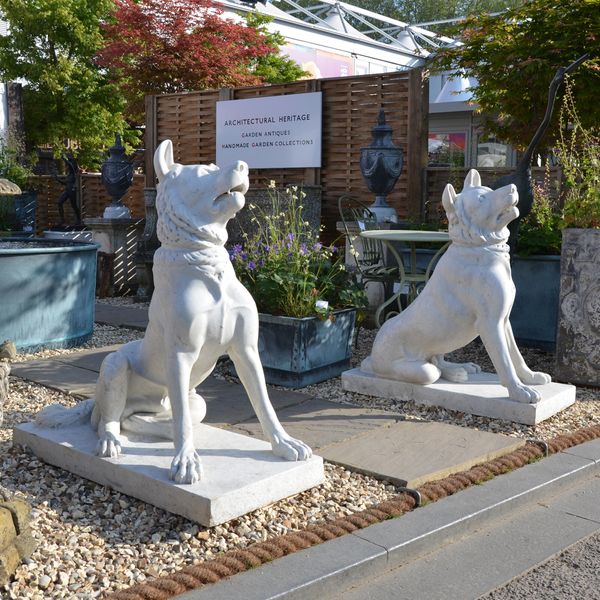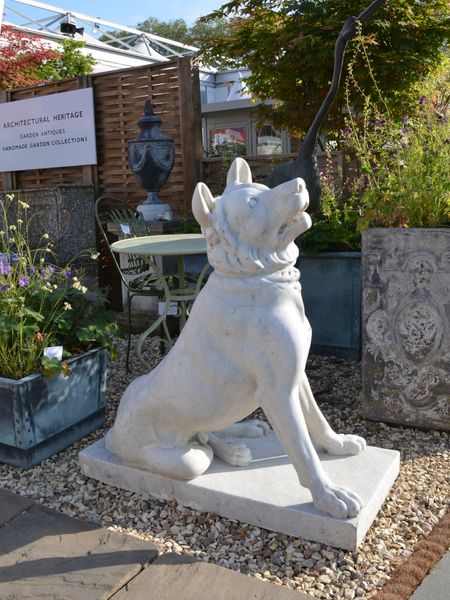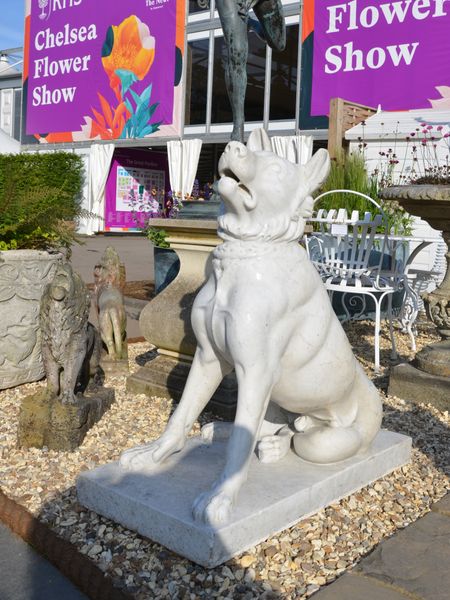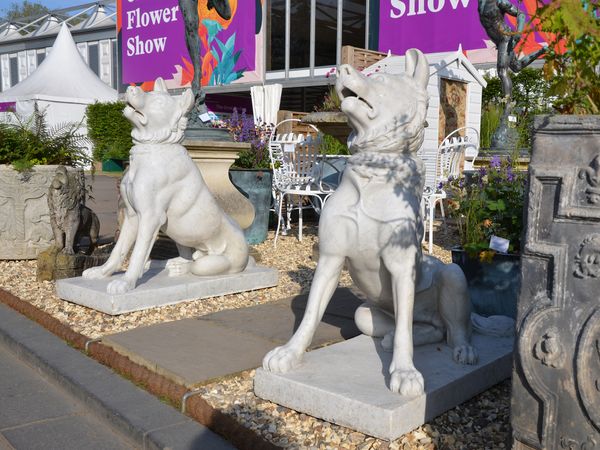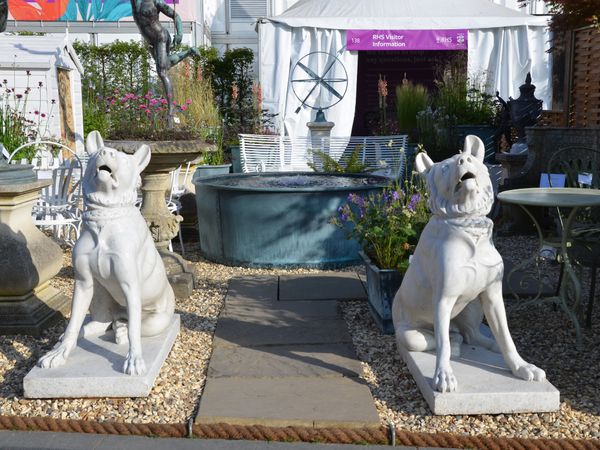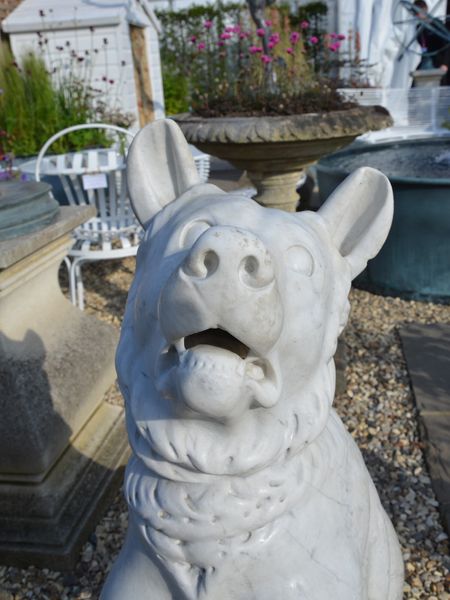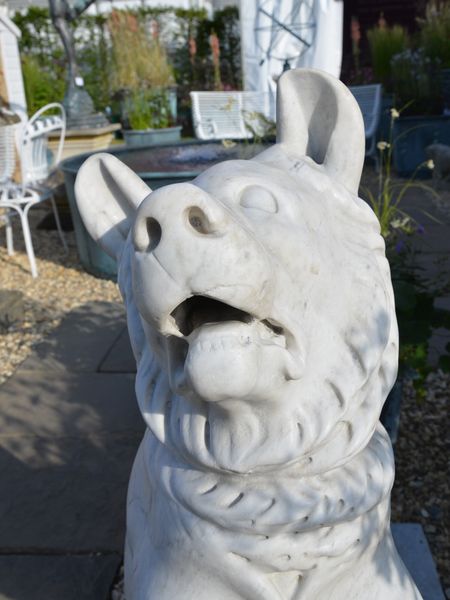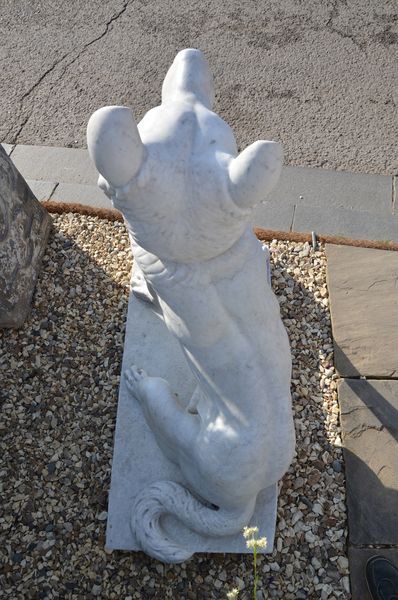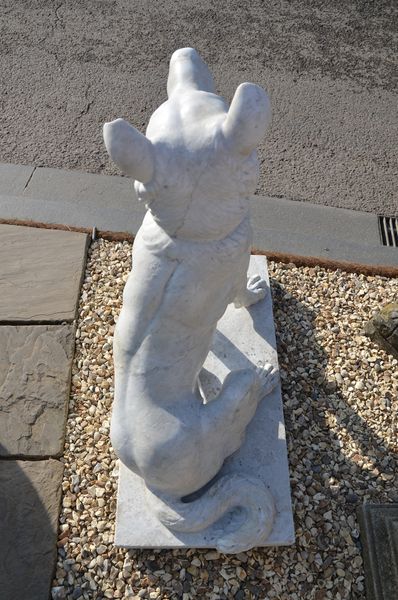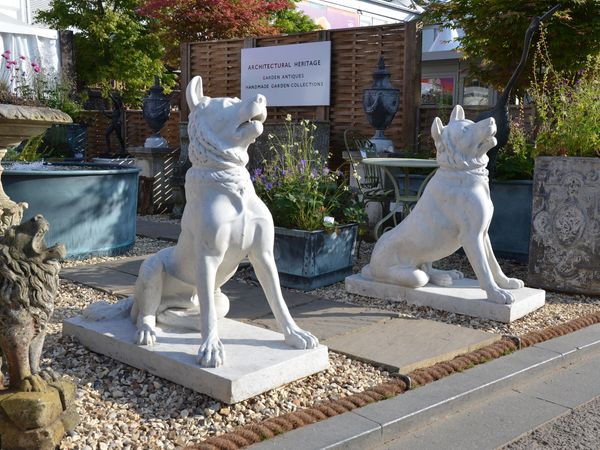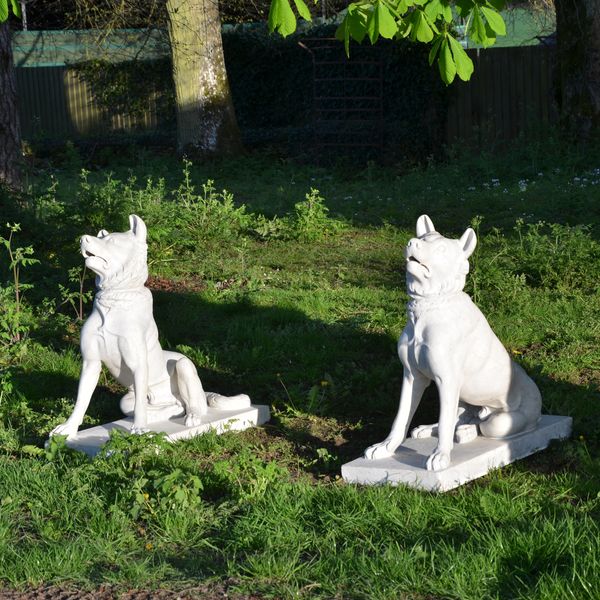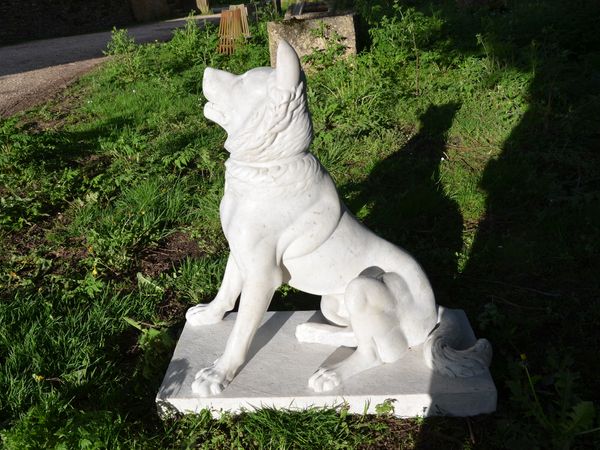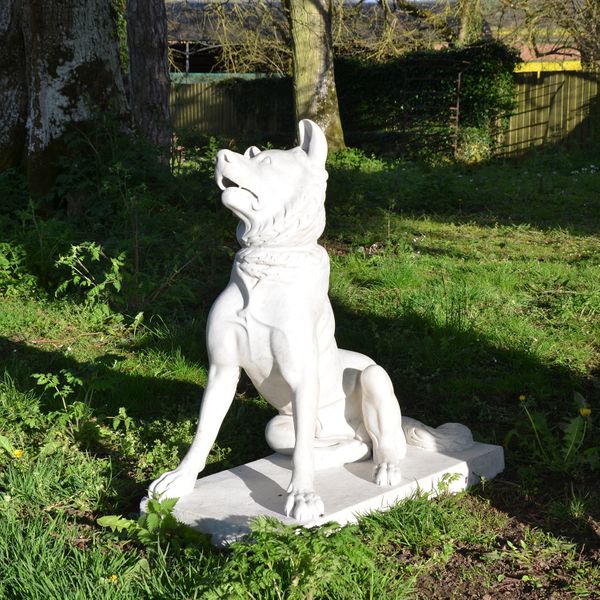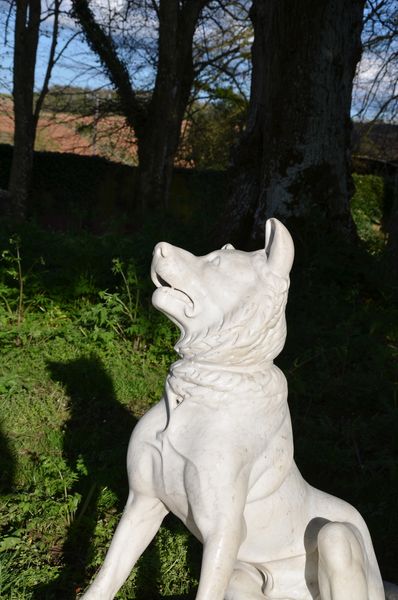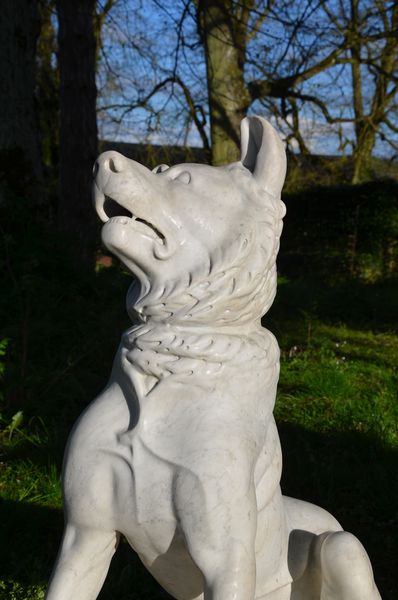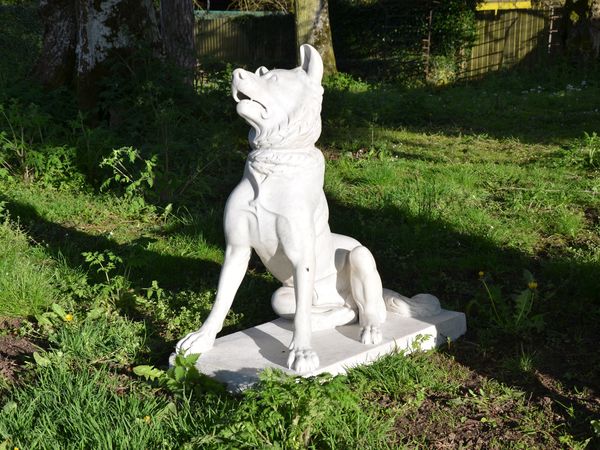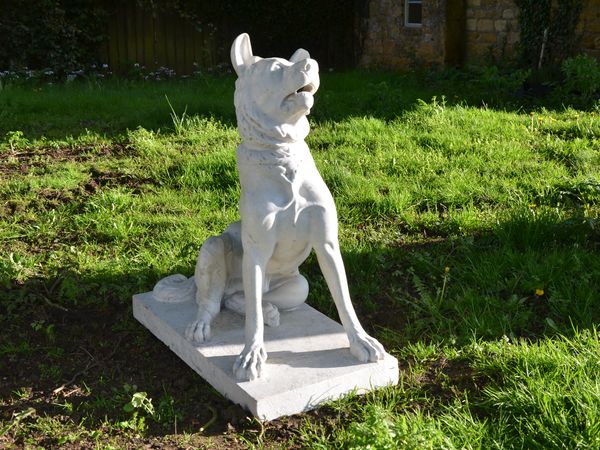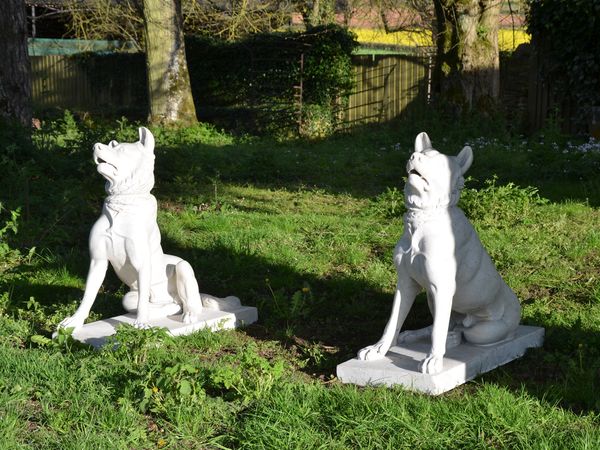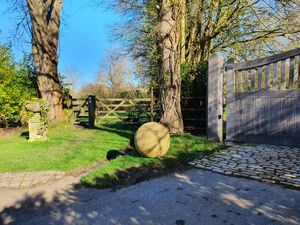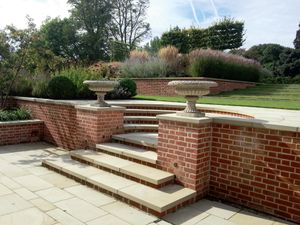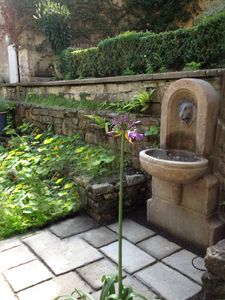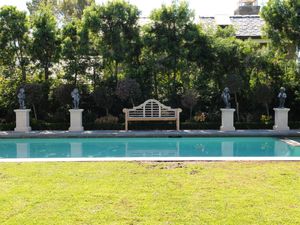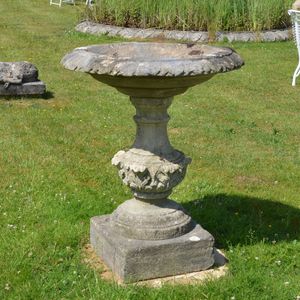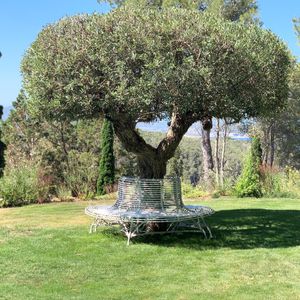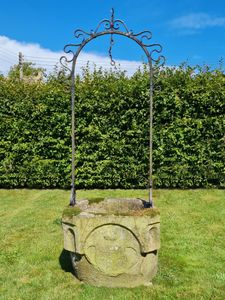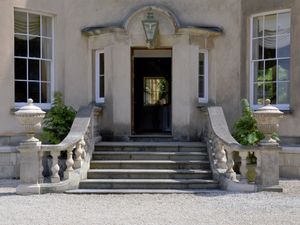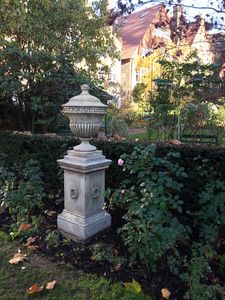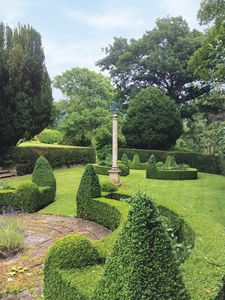The Molossian Hounds
The Molossian Hounds
Circa 1820
Stock Number: 15120/GSO
Height
104.00cm
[40.94 inches]
Width 47.00cm [18.50 inches]
Depth 98.00cm [38.58 inches]
Width 47.00cm [18.50 inches]
Depth 98.00cm [38.58 inches]
Sold
A pair of early 19th century (circa 1820) Carrara Marble dogs known variously as: The Molossian Hounds, The Jennings Dog, The Duncombe Dog and the Dog of Alcibiades. The original model now in the British Museum being a Roman 2nd Century AD copy of the lost Hellenistic 2nd Century BCE Greek Bronze.
Found in Ancient Greece, The Molossian Hound was a breed of Mastiff-like dog used as a guard dog and for hunting .The original (Sculpture) dog was excavated sometime in the mid-18th century just outside of Rome, subsequently finding its way into the possession of the sculptor, restorer and antiquities dealer Bartolomeo Cavaceppi. The English aristocrat Henry Constantine Jennings saw the dog in a pile of rubble in Cavaceppi's workshop sometime in the mid-1750s, purchasing it for 400 scudi, later saying “A fine dog it was and a lucky dog I was to find it”.
On its arrival in Britain the sculpture became famous with replicas made that were thought to make "a most noble appearance in a gentleman's hall”. The names for the Dog came about aptly after the owner with the broken tail of the sculpture leading Jennings to link it to a story… Alcibiades, a rather bad Athenian statesman, owned a large handsome dog beloved by all whose tail Alcibiades cut off to invoke pity to distract his fellow Athenians from his worse deeds, hence The Dog of Alcibiades.
As was the way of the Gentry, gambling debts forced Jennings to sell the sculpture in 1778 achieving the princely sum £1000, selling to the Rt Hon Charles Duncombe. For the next 150 years the “Duncombe Dog” stood guard in the entrance hall of Duncombe Park, Yorkshire where it remained until 1925 when inheritance taxes forced the Duncombes to rent out the hall to Queen Mary's School for Girls, whose pupils were rumoured to feed the dog unwanted Marmite sandwiches.
The Dog was finally sold by Thomas Duncombe's descendant, Charles Anthony Peter Duncombe, 6th Baron of Feversham, in 2001. The Sarah Campbell Blaffer Foundation at the Museum of Fine Arts, Houston had attempted to purchase, however, the granting of an export license was deferred allowing the British Museum enough time to raise the funds to save the Dog for the nation.
A number of examples of this model in a variety of materials can be found, with locations as various as: The Vatican, The Louvre, Wrest Park, Basildon Park, Blaise Museum, in the Lake at Petworth House, and more...
Found in Ancient Greece, The Molossian Hound was a breed of Mastiff-like dog used as a guard dog and for hunting .The original (Sculpture) dog was excavated sometime in the mid-18th century just outside of Rome, subsequently finding its way into the possession of the sculptor, restorer and antiquities dealer Bartolomeo Cavaceppi. The English aristocrat Henry Constantine Jennings saw the dog in a pile of rubble in Cavaceppi's workshop sometime in the mid-1750s, purchasing it for 400 scudi, later saying “A fine dog it was and a lucky dog I was to find it”.
On its arrival in Britain the sculpture became famous with replicas made that were thought to make "a most noble appearance in a gentleman's hall”. The names for the Dog came about aptly after the owner with the broken tail of the sculpture leading Jennings to link it to a story… Alcibiades, a rather bad Athenian statesman, owned a large handsome dog beloved by all whose tail Alcibiades cut off to invoke pity to distract his fellow Athenians from his worse deeds, hence The Dog of Alcibiades.
As was the way of the Gentry, gambling debts forced Jennings to sell the sculpture in 1778 achieving the princely sum £1000, selling to the Rt Hon Charles Duncombe. For the next 150 years the “Duncombe Dog” stood guard in the entrance hall of Duncombe Park, Yorkshire where it remained until 1925 when inheritance taxes forced the Duncombes to rent out the hall to Queen Mary's School for Girls, whose pupils were rumoured to feed the dog unwanted Marmite sandwiches.
The Dog was finally sold by Thomas Duncombe's descendant, Charles Anthony Peter Duncombe, 6th Baron of Feversham, in 2001. The Sarah Campbell Blaffer Foundation at the Museum of Fine Arts, Houston had attempted to purchase, however, the granting of an export license was deferred allowing the British Museum enough time to raise the funds to save the Dog for the nation.
A number of examples of this model in a variety of materials can be found, with locations as various as: The Vatican, The Louvre, Wrest Park, Basildon Park, Blaise Museum, in the Lake at Petworth House, and more...




